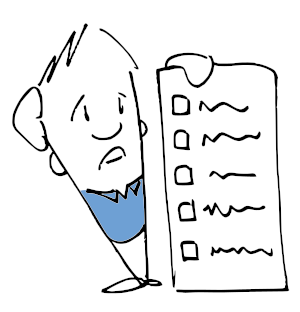If you’re new to online marketing, you may not know where to begin. The following checklist can help…
1. Set Your Goals

What do you hope to accomplish with your online marketing efforts? Here are some common goals:
- Increased website traffic
- Generate more leads
- Boost your sales
- Build brand awareness
Establishing goals helps shape your strategy and determine which metrics to track to analyze your success.
2. Identify Your Target Audience
Who’s your audience? Define your ideal customer. Consider their demographics, interests, and online behavior to better understand how they’ll respond to your content and marketing campaigns.
3. Build a Professional Website
Create a website for your business. It’s the center of your marketing world.
Your site should be easy to navigate, mobile-friendly, and optimized for speed. It should include essential pages, such as Home, About, and Contact.
4. Optimize for Search Engines
Search engine optimization (SEO) can help your website rank higher in search results, which can lead to more traffic. Here are a few basic SEO steps:
- Keyword research
- On-page SEO (title tags, meta descriptions, and headings)
- High-quality content
- Internal and external linking
- Fast loading speeds
5. Set Up Social Media Profiles
You’ll want to use social media to engage with your audience and promote your content. Choose the platforms that your target audience is likely to use most, such as:
- X (Formerly Twitter)
6. Create Valuable Content
Content marketing helps you establish authority and attract potential customers. Regularly publish blog posts, infographics, videos, and social media updates to continually provide value to your audience.
7. Use Email Marketing
Create an email list and attract subscribers. Email marketing can help you build your audience. It’s also essential for those wanting to use their website to sell products or services. Email marketing helps you keep customers informed.
8. Use Paid Advertising
If you have the budget, consider using paid ads to quickly generate traffic. You can run ads on platforms such as Google Ads or Facebook Ads to target specific demographics.
9. Use A/B Split Testing
Use A/B split testing to try different strategies. This can help you continually optimize your strategy for better results.
10. Track and Analyze Your Performance
Regularly monitor your online marketing efforts using tools such as Google Analytics, Facebook Insights, and reports from any other platforms that you use.
Following this checklist can help you establish a stronger online presence. Check out more of our articles for further marketing advice.
Discover more from Two-Bit Marketing
Subscribe to get the latest posts sent to your email.

